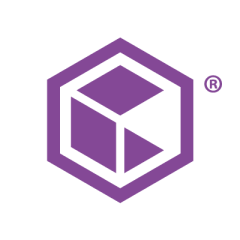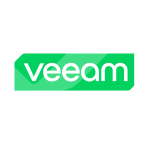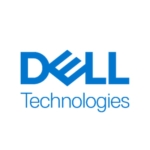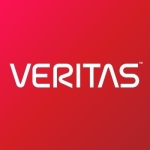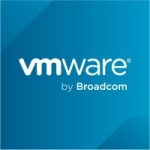What is our primary use case?
We are a solution provider and we have contracts with some of our customers to support their data centers and infrastructures. Our support is based on their needs and we choose solutions for their environment. One of the products that we use in this capacity is Commvault.
Commvault is an enterprise-level data platform that is used for backup and replication. It offers four product lines including complete backup and recovery, the HyperScale integrated appliance, disaster recovery, and Activate Analytics. We use the backup and recovery solution.
How has it helped my organization?
Commvault provides us with a single platform to move, manage, and recover data. Most enterprise solutions in this area provide similar functionality but the Commvault GUI provides better reports and access to your assets. All of the features have been integrated within one interface. On the other hand, Veritas has third-party solutions that generate better reports and offer better control over your environment, such as OpsCenter.
In terms of recovery options for data and workloads, Commvault has several features available. An important feature is that you can recover data based on your policy. It also provides the capability to back up and recover specific types of data, such as an SPS server.
The next step, after having a good backup solution, is disaster recovery. This has to take into account the software that you are using in your environment and Commvault can help with this in some aspects. For example, it can replicate your SQL servers on your disaster site. In a regular recovery scenario, I think that most backup solutions are the same.
This solution allows us to easily isolate storage targets from public networks. When we implement our backup solutions, the first step is to separate the network. We create a private network and we use separate storage for the backup in order to isolate all production services from backup services. It is very important to separate the working area because of ransomware and other threats.
Commvault also has other features to protect backup data but I prefer to have a separate backup environment with its own equipment. All of it should be physically separated from the production area. One service is for production data and the other is for backup data.
Separating the production and backup data not only helps with attacks but also helps to manage performance. In IT, we are always faced with two important metrics, which are security and performance. Using physical isolation, data protection is improved, and I prefer to use physical isolation rather than logical isolation that is available using the software.
Using this type of configuration, we were able to successfully recover data for one of our customers. They were faced with a ransomware attack and had lost more than 40% of their data. We were able to completely recover their data in less than three days.
What is most valuable?
Like other enterprise backup solutions, Commvault is very well suited for enterprise-level customers.
Commvault integrates well with all types of operating systems and supports heterogeneous environments. It integrates well with storage solutions such as NetApp, and we haven't had any trouble integrating with hardware such as tape drives or otherwise.
I like using the command-line interface versus the GUI. I find the CLI is easy to use for customizing and generating reports, as well as for managing the software. That said, I think that the GUI is enough for many administrators in a simple environment.
The support documentation is good. Based on the help and documentation, I have been able to generate scripts that I run on a daily basis to get the reports and features that I need.
What needs improvement?
The deployment process should be simplified because it is not something that just anybody can do.
One of my colleagues in Australia is using Commvault and has told me that the solution does not yet have complete support for integrating with cloud providers. Specifically, it is not integrated with Amazon services. In the future, I would like to see better integration with cloud environments.
Commvault is only installed in our Windows environment, on Windows server, and I prefer to use Linux because I find the environment simpler to use. In a Windows environment, it is not easy to use command-line-based products.
There are two people on my team that manage Commvault for my customers. It is supposed to be one of the least time-consuming solutions but in reality, it consumes 60% of their time. Compared to other backup solutions, it takes more time to manage and operate.
Commvault doesn't support container-based systems and does not offer agentless backup.
For how long have I used the solution?
I've been using Commvault for one of our customers for less than three years.
What do I think about the stability of the solution?
Stability-wise, Commvault is one of the best backup solutions on the market.
What do I think about the scalability of the solution?
This product is scalable enough, although it will be complicated to do, depending on your environment. Veeam, for example, is not as complicated to scale. The same is true with Veritas NetBackup.
I think the reason for this is that Commvault is installed only in Windows environments. Veritas NetBackup, for example, can be installed on Unix or Linux, and those operating systems are easier when it comes to scaling. Most software depends on the features that are available in the host operating system.
How are customer service and support?
We don't have access to support due to sanctions, so the support and management are done by our local engineers. It is difficult for our customers to use this type of software without support.
Which solution did I use previously and why did I switch?
I have worked with other similar solutions including Veritas and Veeam. Veeam is easier to implement than Commvault, although Commvault is quicker to deploy than Veritas.
Veeam is suitable for a small business but when it comes to enterprises, Commvault is one of the solutions that we implement. Generally speaking, Commvault Backup and Commvault Complete Data Protection are good solutions for enterprise-level companies.
Veeam is easy to use and is easier to implement but we do not only deal with small businesses. Most of our customers are enterprises and we have to select the best solutions for them. Other disadvantages to Commvault are that it doesn't support container-based systems and agentless backup is not supported in this software. However, it is more powerful when it comes to integrating heterogeneous environments.
How was the initial setup?
Commvault is not a product with an easy deployment process. It is not something that just anybody can do on their own and it is best suited for enterprise users. Documentation is available online but other similar products, such as Veeam, are easier to implement. There is not enough documentation for Commvault available online.
One of my customers implemented Commvault in less than one month, which is not bad compared to other enterprise solutions like Veritas. An enterprise often includes complexities such as a heterogeneous environment, so a deployment that takes less than one month is quite reasonable.
What other advice do I have?
My advice for anybody who is implementing Commvault is to make sure that they have a support contract. Support is very important, as this is a time-consuming product when it comes to management and regular maintenance.
In summary, this is an enterprise solution that you can trust in your environment for backup and recovery. In fact, it is one of the top 10 backup solutions on the market.
I would rate this solution a seven out of ten.
Which deployment model are you using for this solution?
On-premises
Disclosure: My company does not have a business relationship with this vendor other than being a customer.

